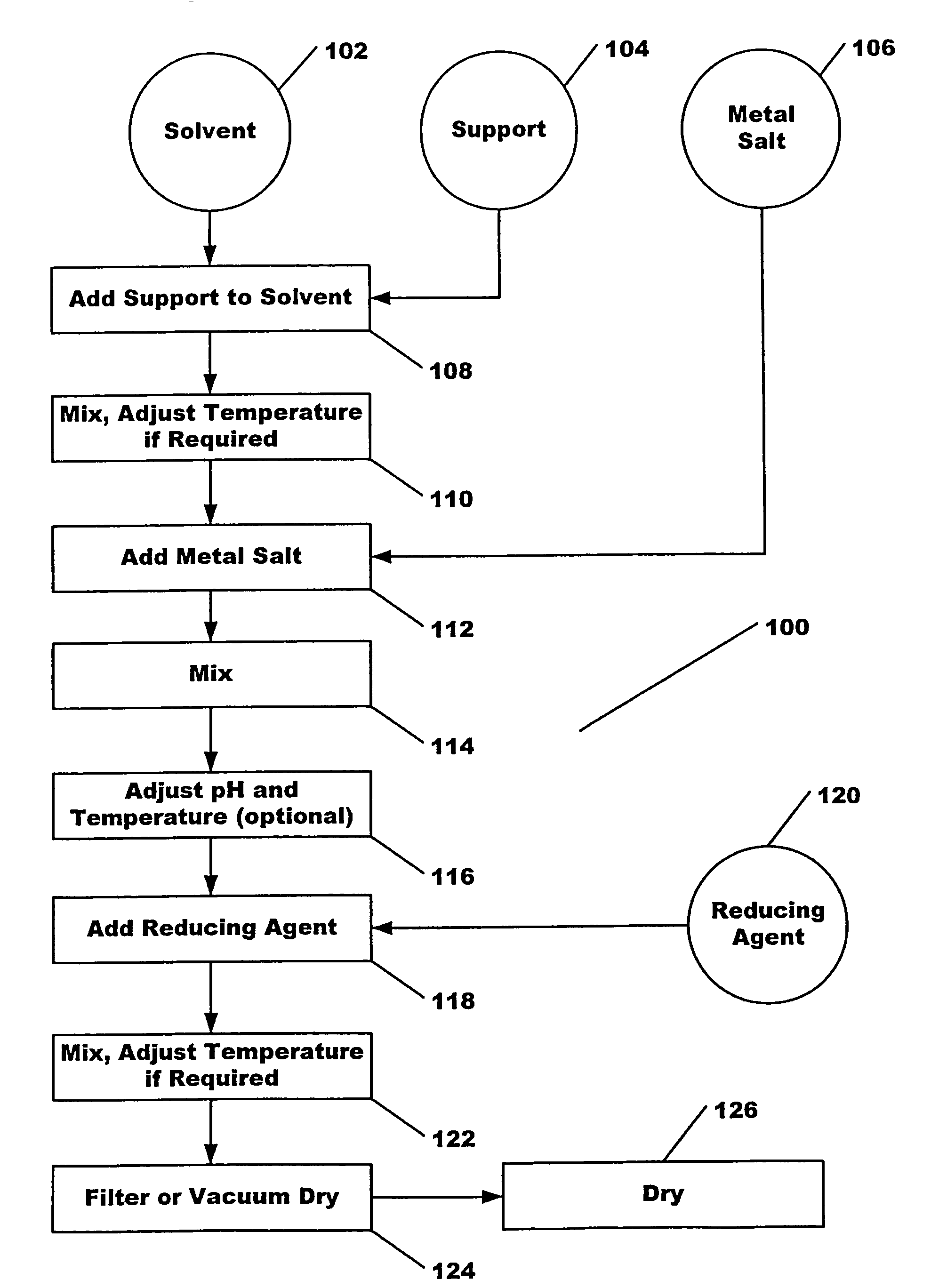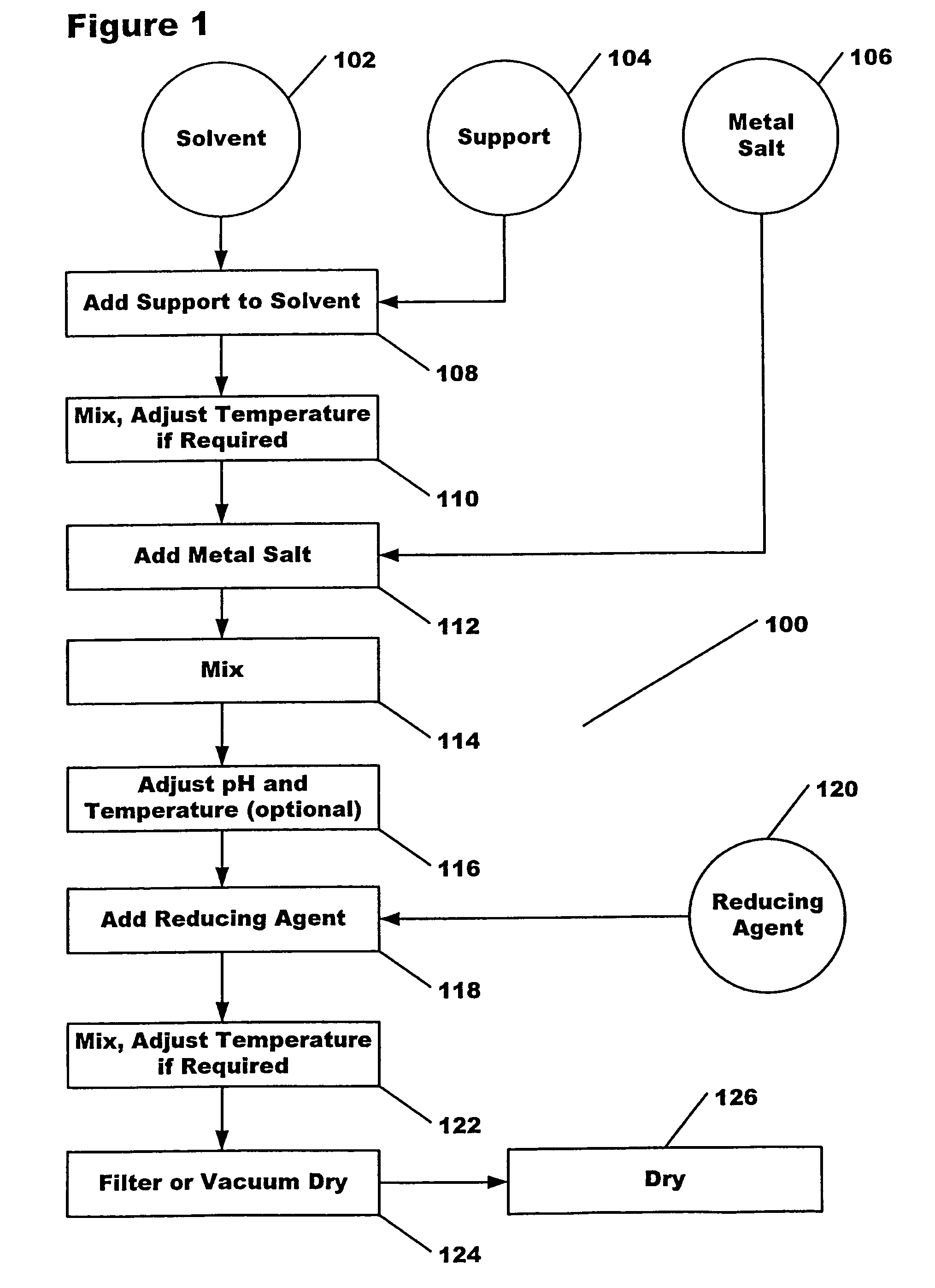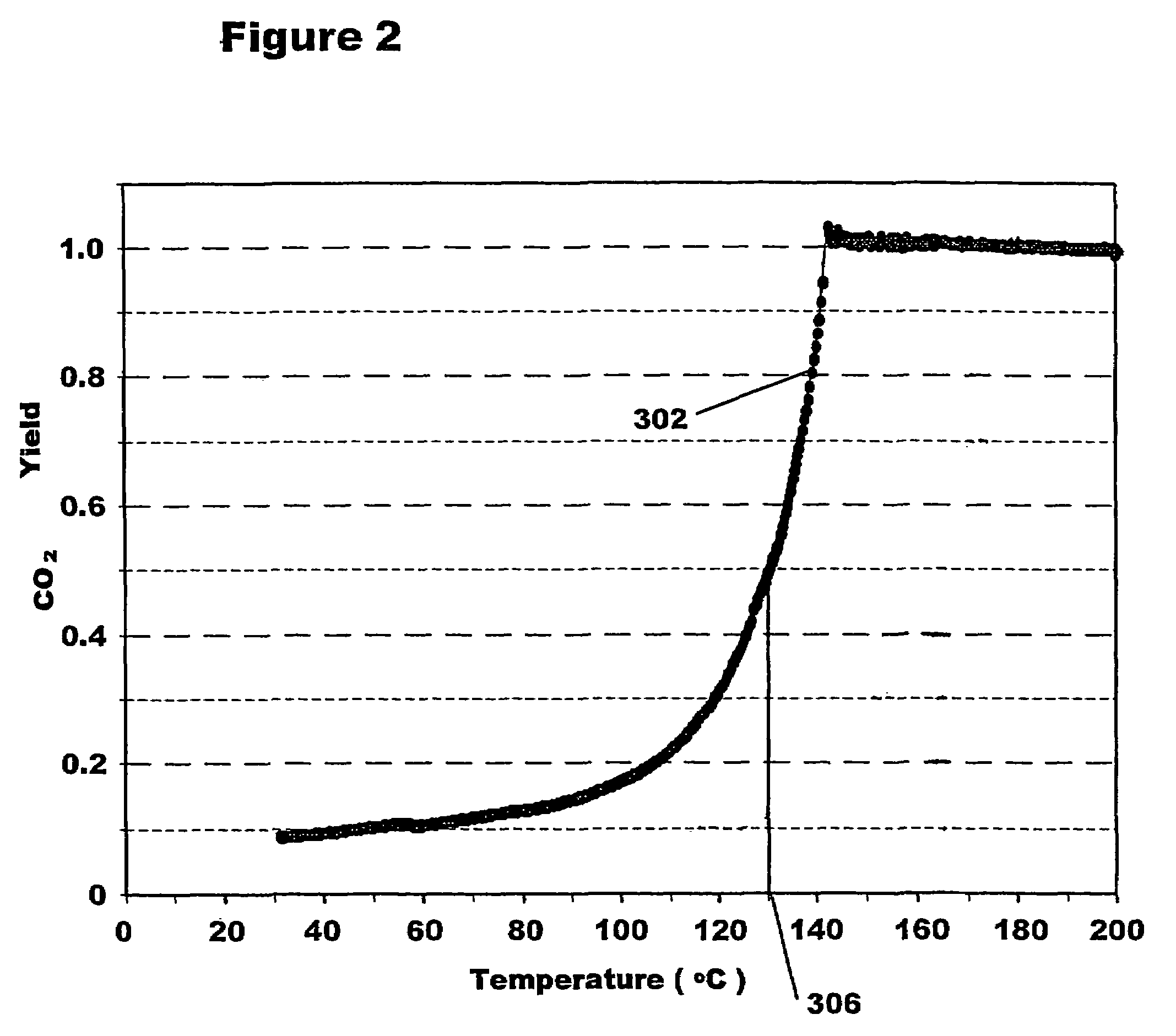Method for producing heterogeneous catalysts containing metal nanoparticles
a metal nanoparticle and heterogeneous technology, applied in physical/chemical process catalysts, other chemical processes, fibers, etc., can solve the problems of large particle size, less desirable particle size, and difficult production of highly dispersed catalysts
- Summary
- Abstract
- Description
- Claims
- Application Information
AI Technical Summary
Benefits of technology
Problems solved by technology
Method used
Image
Examples
example 1
[0030]Steps 108, 110: 2 g SBA-150 alumina (BET surface area was 150 m2 / g) was added to 58 ml DDI (double de-ionized) H2O and stirred for 2 hours at room temperature.
[0031]Steps 112, 114: 0.8 ml Pt(NO3)2 solution (8 mg Pt) was added to the system and stirred for 1.5 hours at room temperature.
[0032]Steps 118, 122: 2.05×10−4 moles N2H4 (0.50 ml 0.41 M N2H4) was added to the solution and stirred for 2 hours at room temperature.
[0033]Steps 124, 126: Mixture was filtered, then dried at 120° C. for 2 hours.
[0034]The catalyst produced with the example process above had an average Pt particle diameter of 3.17 nanometers+ / −a standard deviation of 1.4 nanometers. The range of particle sizes was 1.6 to 14.3 nanometers. The CO oxidation light off temperature (at 50% CO2 yield) was 134° C. Metal weight loading was 0.4%.
example 2
[0035]Steps 108, 110: 2 g SBA-150 alumina (BET surface area was 150 m2 / g) was added to 60 ml DDI (double de-ionized) H2O and stirred for 2 hours at room temperature.
[0036]Steps 112, 114: 0.8 ml Pt(NO3)2 solution (8 mg Pt) was added to the system and stirred for 1.5 hours at room temperature.
[0037]Steps 118, 122: The solution purged with pure Ar for 20 min, then purged with pure H2 for 10 min while stirring. Then the system was sealed while stirring for 24 hours.
[0038]Steps 124, 126: Mixture was filtered, then dried at 120° C. for 2 hours.
[0039]The catalyst produced with the example process above had an average Pt particle diameter of 3.55 nanometers+ / −a standard deviation of 1.2 nanometers. The range of particle sizes was 1.3 to 9.1 nanometers. The CO oxidation light off temperature (at 50% CO2 yield) was 131° C. Metal weight loading was 0.4%.
example 3
[0040]Steps 108, 110: 2 g SBA-150 alumina (BET surface area was 150 m2 / g) was added to 60 ml DDI (double de-ionized) H2O and stirred for 2 hours at room temperature.
[0041]Steps 112, 114: 0.8 ml Pt(NO3)2 solution (8 mg Pt) was added to the system and stirred for 1.5 hours at room temperature.
[0042]Steps 118, 122: 8.2×10−4 moles NH2OH (2.0 ml 0.41 M NH2OH) was added to the solution and stirred for 2 hours at room temperature.
[0043]Steps 124, 126: Mixture was filtered, then dried at 120° C. for 2 hours.
[0044]The catalyst produced with the example process above had an average Pt particle diameter of 4.35 nanometers+ / −a standard deviation of 1.3 nanometers. The range of particle sizes was 1.7 to 11.7 nanometers. The CO oxidation light off temperature (at 50% CO2 yield) was 139° C. Metal weight loading was 0.4%.
PUM
| Property | Measurement | Unit |
|---|---|---|
| particle diameter | aaaaa | aaaaa |
| particle diameter | aaaaa | aaaaa |
| diameters | aaaaa | aaaaa |
Abstract
Description
Claims
Application Information
 Login to View More
Login to View More - R&D
- Intellectual Property
- Life Sciences
- Materials
- Tech Scout
- Unparalleled Data Quality
- Higher Quality Content
- 60% Fewer Hallucinations
Browse by: Latest US Patents, China's latest patents, Technical Efficacy Thesaurus, Application Domain, Technology Topic, Popular Technical Reports.
© 2025 PatSnap. All rights reserved.Legal|Privacy policy|Modern Slavery Act Transparency Statement|Sitemap|About US| Contact US: help@patsnap.com



